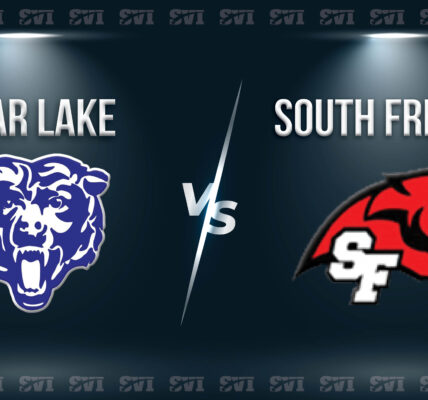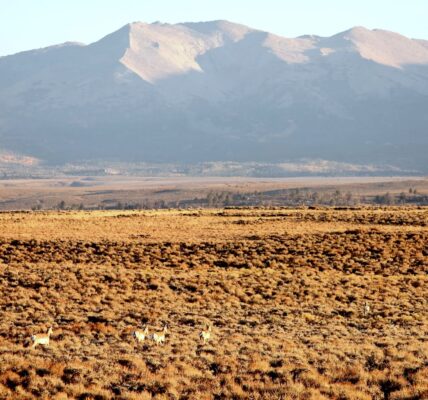Studies: Climate change, lake trout could impede Yellowstone Lake cutthroat recovery indefinitely

• Research suggests intensive gillnetting will be needed in perpetuity to prevent another cutthroat trout collapse. Another paper has an even more dire prediction: that cutthroat in the lake are potentially unrecoverable.
By Mike Koshmrl, WyoFile.com
Judging by the high watermarks on bridge pilings, Todd Koel, lead fisheries biologist for Yellowstone National Park, has witnessed Yellowstone Lake water levels fall by as much as 6 to 8 feet during warm, dry summers.
If climate models are right, such enormous swings will grow evermore frequent and even more extreme, hamstringing the park’s fight to save native cutthroat trout populations.
During drought-ridden years, dozens of tributaries run dry before reaching the lake. Historically, cutthroat trout used between 59 and 68 of the streams (tallies vary) that feed the 136-square-mile lake to spawn. In good water years, a new age class of fry pour out of creeks and into Yellowstone Lake. In the 1970s this self-replenishing system supported an estimated population of 3.5 million to 4 million native Yellowstone cutthroat. But when the creeks run dry, the cycle is broken.
In perhaps one example of the types of interventions that may be required in the future, the park’s 13-year-old Native Fish Conservation Plan authorizes Koel to reconnect tributaries with the lake in drought years.
“Basically, we’re going to take those Mark-5 pumps that firefighters use,” Koel told WyoFile. “We’re just going to drive up with a skiff, crank up the pump, and blast out the channel between the lake and the creek — and just open it up physically with water pumps.”
The technique — not yet employed — may help address the problem of disconnected cutthroat spawning streams. There are other challenges.
Yellowstone Lake cutthroat have long been under siege by predacious, nonnative lake trout. The Park Services has netted and killed the invasive trout by the hundreds of thousands annually for more than a decade. Now new research suggests that, when also accounting for the effects of climate change, the intensive netting might have to continue forever.
“If climate change effects are not included in the model, we could reduce lake trout gill netting by maybe 25% and we could maintain the cutthroat population at a healthy level,” Koel said. “But when you bring in the effects of climate change on the cutthroat and the lake trout — it especially affects the cutthroat — it basically says we need to maintain gill netting at the level we’re at far into the future.”
The population model that Koel references is complex. Developed by the U.S. Geological Survey and published in the academic journal Fisheries, it takes into account a host of factors that affect the native species, and how those variables interact: climate change, lake trout netting, disease and competition for prey.
“We showed that cutthroat trout recovery in Yellowstone Lake will likely depend on several factors in addition to lake trout suppression,” lead author and USGS fish biologist Hayley Glassic wrote. “Although lake trout predation is credited as a major factor decreasing cutthroat trout biomass in the lake, we could not fit the Ecopath model to historical data without also incorporating the effect of whirling disease and lake levels (sporadic historical drought), suggesting that all three factors in concert may affect the cutthroat trout population.”
Koel co-authored the study, which underscored the importance of netting lake trout to hold that population in check as water levels drop.
“If you reduce lake trout gillnetting to 25% of what it is right now, within so many years the cutthroat will be basically gone,” Koel said. “I wish it was a different message. It’d be nice to know we could cut back more on netting, but it’s just the reality we’re going to be living in in the future.”
Partly that’s because, unlike cutthroat which spawn in tributaries, lake trout spawn in the lake itself. Lower water levels may actually help lakers thrive while those same factors threaten cutthroat’s ability to reproduce. Climate change-lowered lake levels could increase the abundance of 2-year-old and older lake trout, according to the USGS modeling.
“What our models show is there’s a possibility that [lake trout] recruitment could increase,” Glassic told WyoFile.

Another take
The modeling published in the journal Fisheries isn’t the only recent study suggesting climate change-induced drought threatens Yellowstone cutthroat recovery.
Lynn Kaeding, a retired U.S. Fish and Wildlife Service biologist, led fisheries research in the 2.2-million-acre national park back in the 1990s, and was there when lake trout were discovered in Yellowstone Lake.
“Climate change certainly started the [cutthroat] decline, but then lake trout added to it,” Kaeding told WyoFile. “At this juncture, it’s not really possible to separate the impact of one from another — they’re both having dramatic effects.”
Kaeding recently published a paper in the journal Aquatic Sciences that suggests cutthroat trout recovery to historical population levels in Yellowstone Lake might be out of reach. For it to happen, he writes, the climate would need to revert to what it was in the 1980s, and lake trout would also need to be reduced to mid-1990s numbers.
“It certainly is dire for Yellowstone cutthroat trout in Yellowstone Lake,” Kaeding said. “I don’t see a way to solve the problem.”
Recognizing that Yellowstone Lake might not be fixable, he said, could free up resources that could go toward other forms of Yellowstone cutthroat trout conservation. The netting operation in the big lake runs up a $2-3 million bill each year.
Kaeding has also advocated for changes to the Endangered Species Act to accommodate Yellowstone cutthroat and similar species. Writing in the journal Conservation Science and Practice in a 2023 paper, he proposed that the landmark 1973 environmental law should be adapted to include a novel listing category: “warranted but not recoverable absent effective climate-change adaptation assistance.”
Such a category, he argued, would acknowledge the scientific reality of intractable climate change impacts. In doing so, it could redirect conservation actions, perhaps toward creative adaptation strategies like translocating species to areas outside their historical range that become suitable due to climate change.
What lies ahead for Yellowstone Lake’s cutthroat trout? While estimated numbers of the native species lag far behind where they were before lake trout showed up, Koel is encouraged by what he’s seeing.
“We do have the data, and we’re reporting it out as recovery — though it’s not perfect,” Koel said.
Cutthroat recovery?
Cutthroat populations bottomed out between 2005 and 2010, Yellowstone’s fisheries chief said. At that time, netting boats that set out annually in August to monitor the lake-wide population were only catching cutthroat trout at a rate of 12 to 15 fish “per unit of effort.” That catch rate has since increased roughly threefold to 40 fish per unit of effort in the most productive years, like 2014 and 2016. The catch per unit of effort has hovered between 25 and 30 cutthroat most recently, he said.
Notably, the cutthroat in Yellowstone Lake are much heftier than those of yesteryear: “A 20-inch fish now weighs twice what a 20-inch fish would have weighed prior to the lake trout invasion,” Koel said. “We’re really happy about it.”
The fish are so much heavier that Yellowstone is considering reevaluating its cutthroat recovery goals. Overall biomass, Koel said, might be a better metric for those goals than simple abundance.
Kaeding, who used to be in Koel’s shoes, had a different perspective.
“They’re growing so big because they don’t have competition among themselves,” he said. “That’s not necessarily a positive from the recovery standpoint, in my view.”
The data also show cutthroat trout recovery has also been slower than expected and that it hasn’t kept pace with the reductions in the biomass of mature lake trout. That’s explained partly by remaining lake trout changing their diets, Glassic concluded in a separate peer-reviewed study. When lake trout occur at high density in Yellowstone Lake, they eat primarily shrimp-like amphipods — also a big prey item of cutthroat. When lake trout densities decrease, like they are right now from netting, they switch over to eating cutthroat.
“The abundance of the native species in need of conservation may take longer to recover due to the diet plasticity of the invasive species,” Glassic wrote.
The National Park Service, she suggested, could revise its cutthroat conservation benchmarks to be more realistic and acknowledge the fluid predator-prey dynamics in Yellowstone Lake.
Eventually, the raft of new research about climate change impacts and other variables might also help Yellowstone update its cutthroat conservation management strategies. For now, however, the Park Service intends to keep on with the core component of its current plan: netting and killing lake trout.
“Keeping spawning streams open, we haven’t implemented that yet,” Koel said. “We have it in our plan and we can jump on that if things get bad. But what we can do is continue to suppress lake trout. That’s one thing we can do — and we have to do, given the modeling.”
Bob Gresswell, a retired USGS fisheries biologist, is optimistic that Yellowstone Lake’s cutthroat could withstand climate change alone.
“These fish have been in the lake since the end of the last ice age, and there have been some pretty warm and dry periods,” said Gresswell, who chairs a scientific review panel guiding Yellowstone Lake management.
It’s the lake trout — which are proving far more resilient to netting than expected — that have him most worried.
“Killing lake trout is still the highest priority,” Gresswell said. “They should keep killing lake trout, in my view.”
The latest scientific modeling from Glassic supports the suggestion. Yellowstone once positioned its intensive netting-based lake trout-killing campaign as a temporary effort that could be scaled back once the population crashed. Now, it’s becoming increasingly probable — and even more likely because of climate change — that gill netting boats will be plying Yellowstone Lake exhaustively for the foreseeable future.
WyoFile is an independent nonprofit news organization focused on Wyoming people, places and policy.





